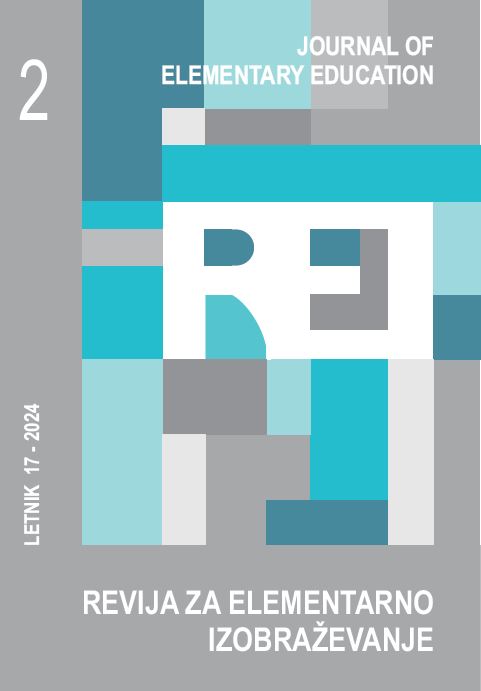Development and Contemporary Understanding of Work-Based Learning
DOI:
https://doi.org/10.18690/rei.3609Keywords:
didactical model; work-based Learning; workplace learning; work-related learning, contemporary education.Abstract
Serious criticism of didactic intellectualism in the past resulted in a range of pedagogical approaches to Work-based Learning as a response to this issue. A comparative overview of the development of work-based learning over time is presented in this article. Additionally, a temporal approach to work-based and workplace learning is explored. We see the change of WBL from being one part of individual pedagogical approaches to becoming part of policy recommendations. Finally, a discussion of the didactic features of contemporary Work-based Learning clearly positions it as a didactic model. The paper stresses the importance of WBL as a didactic model that is appropriate in all student-centred classrooms, regardless of the level of education.
Downloads
References
Avis, J. (2010). Workplace learning, knowledge, practice and transformation. Journal for Critical Education Policy Studies, 8(2), 165-193.
Avis, J. (2002). Work-based learning and social justice: learning to labour? In: British Educational Research Association Conference, 12-14th September 2002, University of Exeter. Available https://eprints.hud.ac.uk/id/eprint/8716/
Bognar, B., and Matijević, M. (2002). Didaktika. Školska knjiga.
Boud, D., and Solomon, N. (2007). Work-Based Learning, Graduate Attributes and Lifelong Learning. In P. Hager, and S. Holland (eds.), Graduate Attributes, Learning and Employability. Lifelong Learning Book Series, Vol 6 (pp. 207 – 220). Springer. DOI: 10.1007/1-4020-5342-8_11
Boud, D., and Symes, C. (2000). Learning for Real: Work-based Education in Universities. In C. Symes, and John McIntyre (eds.), Working Knowledge: The New Vocationalism and Higher Education (pp. 14-29). The Society for Research into Higher Education and Open University Press.
Boud, D., Solomon, N., and Symes, C. (2001). New practices for new times. In D. Boud, and N. Solomon (eds.), Work-Based Learning: A New Higher Education? (pp. 18-33). Open University Press.
European Commission (2015). Riga Conclusions. Retrieved https://education.ec.europa.eu/docum–ent/riga-conclusions-2015
European Training Foundation (2013). Work-based learning: Benefits and obstacles. A literature review for policy makers and social partners in ETF partner countries. Retrieved https://www.etf.europa.e–u/sites/default/files/m/576199725ED683BBC1257BE8005DCF99_Work-based%200le–arning_Literature%20review.pdf
Gaudig, H. (1969). Die Schule der Selbsttätigkeit. Bad Heilbrunn: Klinkhart.
Harvey, L. (2023). Work-based Learning. Analytic Quality Glossary. Quality Research International. Retrieved http://www.qualityresearchinternational.com/glossary/
Heyler, R. (2015). Learning through reflection: the critical role of reflection in work-based learning (WBL). Journal of Work-Applied Management, 7(1), 15-27. DOI 10.1108/JWAM-10-2015-003
Hrvatska enciklopedija, mrežno izdanje. (2021a). Didaktički funkcionalizam. Retrieved September 25, 2023, from http://www.enciklopedija.hr/Natuknica.aspx?ID=14978.
Hrvatska enciklopedija, mrežno izdanje. (2021a). Model. Retrieved November 3, 2023, from http://www–.enciklopedija.hr/Natuknica.aspx?ID=41453
InnovatiVET (2017). Toolkit: Work-Based Learning Practices in Europe. Retrieved https://epale.ec.euro–pa.eu/sites/default/files/io2_toolkit_wbl_practices_in_europe-en.pdf
Jakopović, S. (1984). Pokret radne škole u Hrvatskoj. Zagreb: Školske novine.
Johnson, L. White, R., Charner, I. Cole, J., and Promboin, G. (2018). FHI 360 Work-Based Learning Manual. FHI360. The Science of Improving Lives. Retrieved https://wbl.fhi360.org/wp-content/uploads/2014/04/WBL-Manual-January-2018-Chapter-1-of-9-Introduction-to-Work-Based-Learning.pdf
Jordan, A., Carlile, O., and Stack, A. (2008). Approaches to Learning: A Guide for Teachers. Open University Press.
Kilpatrick, W. H. (1918). The Project Method: The Use of the Purposeful Act in the Educative Process. Teachers College & Columbia University.
Kis, V. (2016). Work, train, win: work-based learning design and management for productivity gains. OECD Education Working Paper No. 135. OECD Publishing. https://doi.org/10.1787/5jl–z6rbns1g1-en
Kis, V., and Windisch, H. C. (2018). Making Skills Transparent: Recognising Vocational Skills Acquired through Work-Based Learning. OECD Education Working Paper No. 180. OECD Publishing. Available https://dx.doi.org/10.1787/5830c400-en
Koludrović, M., and Rajić, V. (2019). Što je (ne)suvremeno u suvremenom školstvu? Contemporary Themes in Education – CTE: Pedagogy and Psychology: From Amending Drawbacks to Enhancing Personal Strengths and Virtues. Conference proceedings (pp. 139–152).
Konig, E., and Zedler, P. (1998). Teorije znanosti i odgoju. Uvod u osnove, metode i praktičnu primjenu. Educa.
Lester, S., and Costley, C. (2010). Work-based learning at higher education level: value, practice and critique. Studies in Higher Education, 35(5), 561–575.
Little, B., and Brennan, J. (1996). A Review of Work Based Learning in Higher Education. Department for Education and Employment, Sheffield.
Major, D. (2016). Models of work – based learning, examples, and reflections. Journal of Work-Applied Management, 8(1), 17–28. DOI 10.1108/JWAM-03-2016-0003
Milat, J. (2007). Epistemiologija pedagogije: dileme, pitanja, moguća rješenja. Pedagogijska istraživanja, 4(2), 189-201.
Montessori, M. (2023). Otkriće djeteta. Salesiana.
Morris, C. (2019). Work-based Learning. In T. Swanwick, K. Forrest, and B. C. O’Brien (eds.), Understanding Medical Education: Evidence, theory, and practice. Third Edition (pp. 163-178). Wiley-Blackwell.
Musset, P. (2020). Improving Work-based Learning in Schools. OECD Social, Employment and Migration Working Papers, No. 233. OECD Publishing, Paris. Available https://dx.doi.org/10.1787–/918caba5-en
Poljak, V. (1959). Cjelovitost nastave. Školska knjiga.
Poljak, V. (1991). Didaktika. Školska knjiga.
Raelin, J. A. (1997). A Model of Work-Based Learning. Organization Science, 8(6), 563–578. https://doi.–org/10.1287/orsc.8.6.563
Raelin, J. A. (2008). Work-based Learning. Bridging Knowledge and Action in the Workplace. New and Revised Edition. Jossey-Bass.
Rainbird, H., Munro, A., and Senker, P. (2005). Running Faster to Stay in the Same Place? The Intended and Unintended Consequences of Government Policy for Workplace Learning in Britain. In N. Bascia, A. Cumming, A. Datnow, D. Leithwood, and K. Livingstone, D. (eds.). International Handbook of Educational Policy (pp. 885-901). Springer
Röhrs, H. (1993). Georg Kerschensteiner (1852-1932). Prospects: The Quarterly Review of Comparative Education, XXIII (3/4), 807–822.
Standards and Guidelines for Quality Assurance in the European Higher Education Area. (2015). https://www.e–nqa.eu/wp-content/uploads/2015/11/ESG_2015.pdf
Steinert, Y. (2019). Developing Medical Educators: A Journey, not a Destination. In T. Swanwick, K. Forrest, and B. C. O’Brien (eds.), Understanding Medical Education: Evidence, theory, and practice. Third Edition (pp. 531-548). Wiley-Blackwell.
Stoll, L., and Fink, D. (2000). Mijenjajmo naše škole. Educa.
Sweet, R. (2013). Work-based learning: Why? How? Revisiting global trends in TVET: Reflections on theory and practice (pp. 164-203). UNESCO-UNEVOC: Revisiting global trends in TVET. UNESCO-UNEVOC International Centre for Technical and Vocational Education and Training UN Campus. Retrieved https://unevoc.unesco.org/fileadmin/up/2013_epub_re–visiting_global_trends_in_tvet_chapter5.pdf
Topolovčan, T. Rajić, V., and Matijević, M. (2017). Konstruktivistička nastava: teorija i empirijska istraživanja. Učiteljski fakultet. Zagreb.
van Oenen, S. (2021). De ethiek van het onderwijzersberoep rond 1900. Oorspronkelijk verschenen in de herfst van 1984. Pedagogiek, 41(1), 51–68. https://doi.org/10.5117/PEDA2021.1.005. –OENE
Downloads
Published
Issue
Section
License
Copyright (c) 2024 Morana Koludrović, Višnja Rajić

This work is licensed under a Creative Commons Attribution 4.0 International License.
